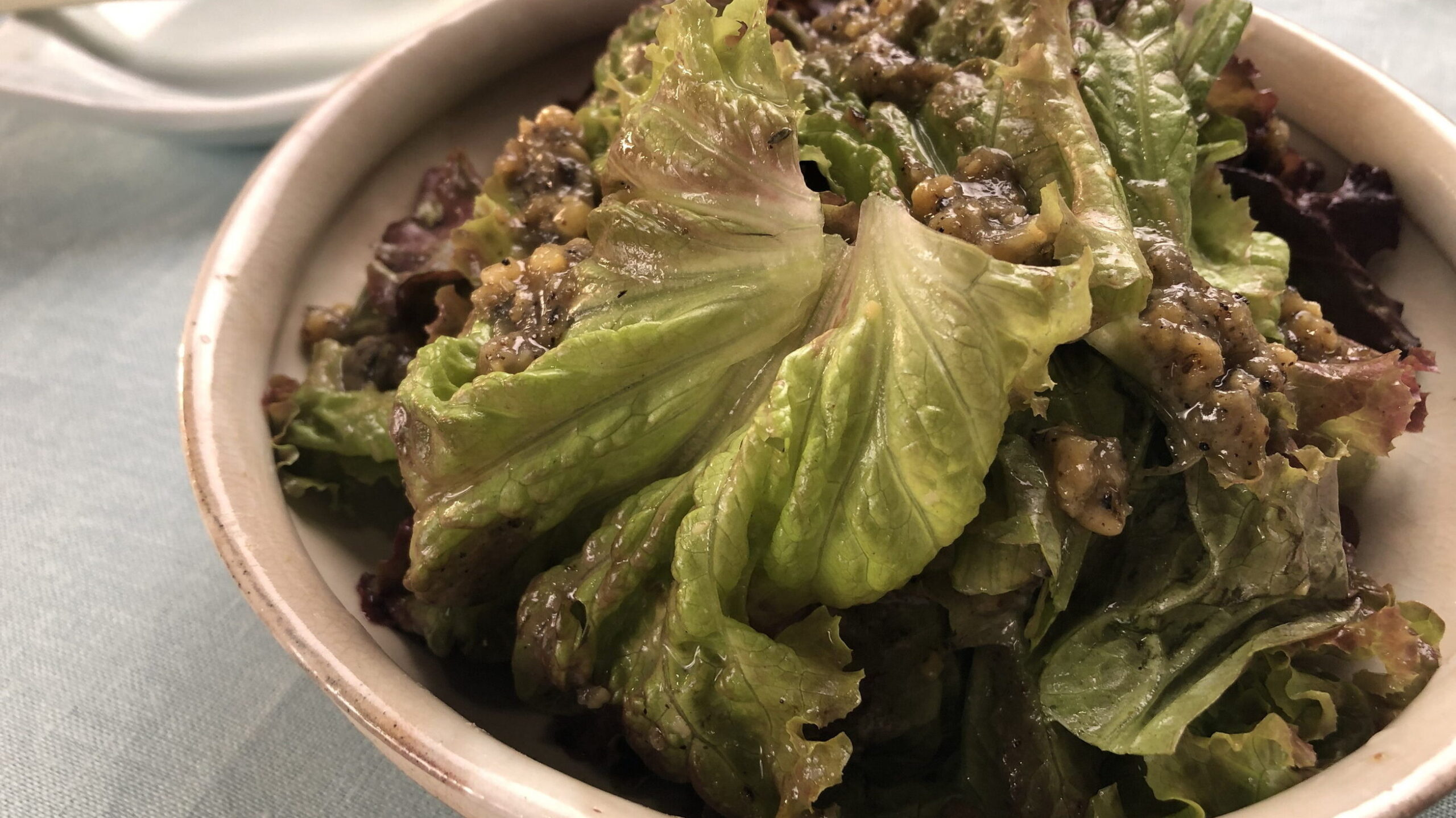
Alright, gather ’round, folks! We’re heading to Yamaguchi Prefecture to explore a dish called “Chisha Namasu.” This is a refreshing salad that really highlights a unique local leafy green. It’s a simple dish, but it’s got a great story and some interesting twists. Let’s dive in!
Dish Name: Chisha Namasu
- Region / Location: Yamaguchi Prefecture (entire prefecture, especially the Hokuura region)
- Primary Area of Tradition: Entire Yamaguchi Prefecture, Hokuura region
- Main Ingredients: Chisha (leaf lettuce), fish, miso
How It’s Eaten / Served
Chisha Namasu is a dish where “Kaki-chisha,” a local variety of leaf lettuce, is mixed with a miso-based dressing. Kaki-chisha is washed, thoroughly drained, and torn into slightly larger than bite-sized pieces. Wakame seaweed, rehydrated in water, is cut into bite-sized pieces. Shirasu (whitebait) is blanched with hot water and drained. The dressing is made by combining miso with sugar, and the juice of kabosu (a citrus fruit), or vinegar. Just before serving, the chisha, wakame, and shirasu are mixed with the dressing. Some people prefer to blanch the chisha quickly, cool it in water, and then squeeze out the excess water. If you’re not a fan of strong acidity, you can add sesame seeds or mirin to the dressing for a milder flavor. Traditionally, people used flaked, toasted iriko, but more recently, shirasu, namari (fish cake), or vinegared fish are commonly used.
Cultural Background and Preservation
Kaki-chisha is a traditional vegetable from the Shimonoseki area, and it used to be grown in home gardens. It’s a crinkled leafy vegetable with a pleasant bitterness and a hint of sweetness. The name “Kaki-chisha” comes from “kagu,” a local dialect word meaning “to pluck,” referring to how the leaves are harvested by picking them from the bottom up. “Chisha Namasu” is a local dish that uses this Kaki-chisha, where the torn chisha is dressed with vinegar and miso or sesame. Because the chisha is mixed by rubbing it, it is also called “Chisha Momi”. It often includes flaked grilled fish or chirimen-jako (dried young sardines), adding calcium and protein, making it a nutritious and popular home-style dish. However, Kaki-chisha has become harder to find these days, so people often substitute it with salad greens like romaine or green leaf lettuce. It’s also said that it tastes delicious with garland chrysanthemum. It is believed that “Chisha Namasu” was created during the Mori era, devised by people facing poverty after the Battle of Sekigahara.
Chisha Namasu is commonly prepared as a home-style dish and is also served to guests as a dish for entertaining.
It’s a staple in home cooking and also appears on school lunch menus.
Additional information:
- Kaki-chisha (かきちしゃ): A local variety of leaf lettuce from the Shimonoseki area in Yamaguchi Prefecture.
- Wakame (ワカメ): A type of edible seaweed.
- Shirasu (しらす): Whitebait or baby sardines.
- Kabosu (カボス): A Japanese citrus fruit, similar to a lime.
- Mirin (味醂): A sweet rice wine used for cooking.
- Iriko (いりこ): Small dried sardines, used for broth or as a topping.
- Namari (なまり): Fish cake.
The information about regional cuisine featured on this website (Piggy's Grandma of Japan) is summarized and adapted from the Ministry of Agriculture, Forestry and Fisheries of Japan (MAFF) website, "Our Regional Cuisines"Additional commentary is provided based on the unique experiences and perspectives of the site's editors.
The copyright for the original content regarding regional cuisine belongs to the Ministry of Agriculture, Forestry and Fisheries of Japan.
The summaries and adaptations published on this site are intended for informational purposes only. Piggy's Grandma of Japan does not guarantee the accuracy or completeness of this information. For the most accurate and complete details, please refer to the original pages on the MAFF website.


